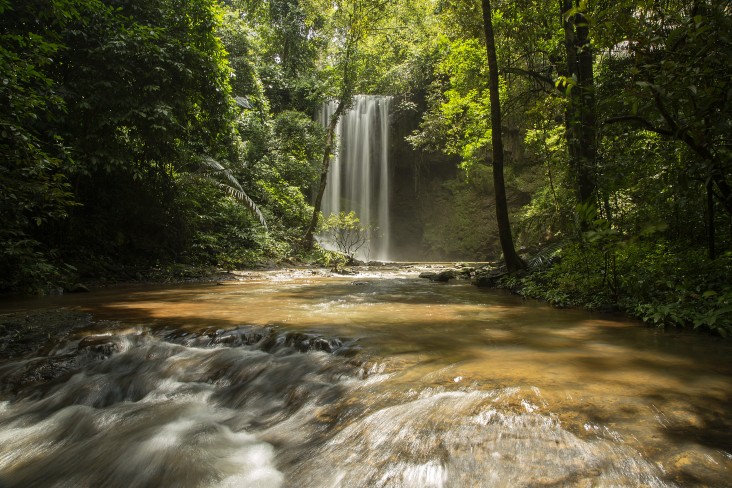
Cambodia maintains roughly 46 percent forest cover and is rich in biodiversity. It is home to the third-largest lowland dry evergreen forest in Southeast Asia, with 2,300 plant species, 14 endangered animals, and one of seven elephant corridors left in the world. However, only 34 percent of Cambodia’s land is protected. Threats to Cambodia’s forest landscapes and biodiversity include clearing and degradation, overexploitation of key species, and undervaluing of ecological services such as carbon sequestration. Industrialized agriculture and mine exploration continue to degrade forests significantly.
USAID is helping Cambodia preserve and sustainably manage its forests and rich biodiversity, and adapt to a changing climate. Its activities support entrepreneurs who focus on non-timber forest products, helping to link them with business development service providers so that they can access productivity-enhancing expertise, technology, equipment and credit. Over the long term, these efforts will help preserve and conserve forest lands and other areas of significant biodiversity, through a clear plan for sustainable natural resource management. USAID is also helping the government and local communities identify and take advantage of opportunities for revenue generation from carbon sequestration and the avoidance of emissions from deforestation. In addition, USAID is strengthening Cambodian laws and policies to improve implementation and enforcement, and is guiding Cambodia’s compliance with environmental laws, international commitments and participation in the UN’s Reducing Emissions from Deforestation and Forest Degradation program.
RESULTS
- Helped over 220,000people reap the economic benefits of sustainable natural management and conservation.
- Trained nearly 80,000 people in natural resources management and/or biodiversity conservation.
- Improved the management of natural resources of more than 2,000,000 hectares of land.
- Reduced over 8 million metric tons of Greenhouse Gas Emissions from deforestation and land use change
- Helped over 75,000 people to adapt to the impacts of climate variability and change








Comment
Make a general inquiry or suggest an improvement.